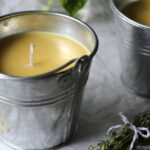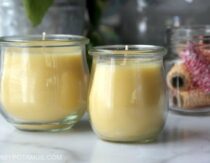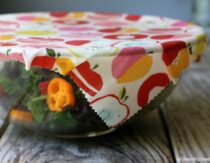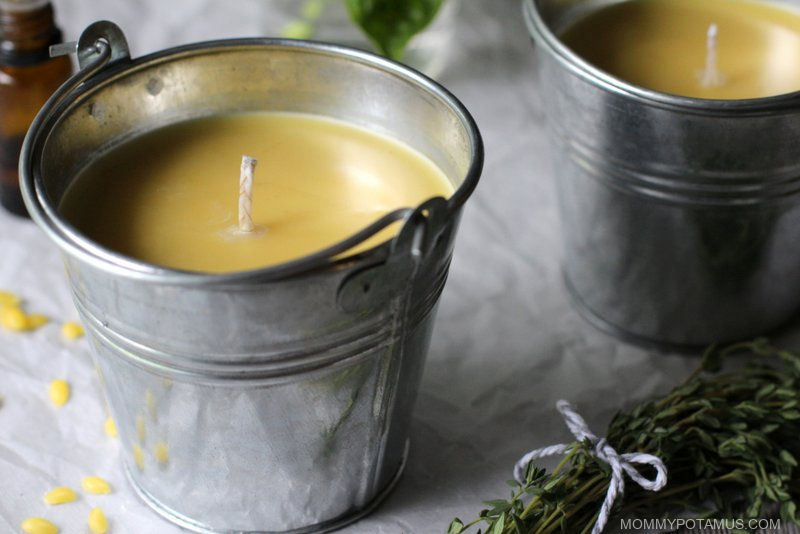
Have you ever pulled up a chair to a mouthwatering outdoor meal, only to realize that you are on the menu? Personally, I prefer to eat my shish kabobs without becoming a mosquito snack.
If you feel the same way, these DIY citronella candles are a safe, non-toxic way to repel mosquitos and other flying insects. They’re adapted from my homemade beeswax candle tutorial and super simple to make using leftover glass jars or candle containers. I love the way they add a bit of ambiance to our deck, too (especially around sunset).
Does citronella oil really repel insects?
Derived from a cousin of lemongrass, citronella essential oil is distilled from the leaves and stems of the Cymbopogon plant.
According to the Environmental Protection Agency, “Oil of citronella has been in continuous use as an insect repellent with human applications for almost 50 years without any adverse incidents being reported to the EPA.” (1)
However, recent studies suggest that another oil – lemon eucalyptus – may work even better. (2) Since essential oils often have a synergistic effect, I blend both together in my recipe.
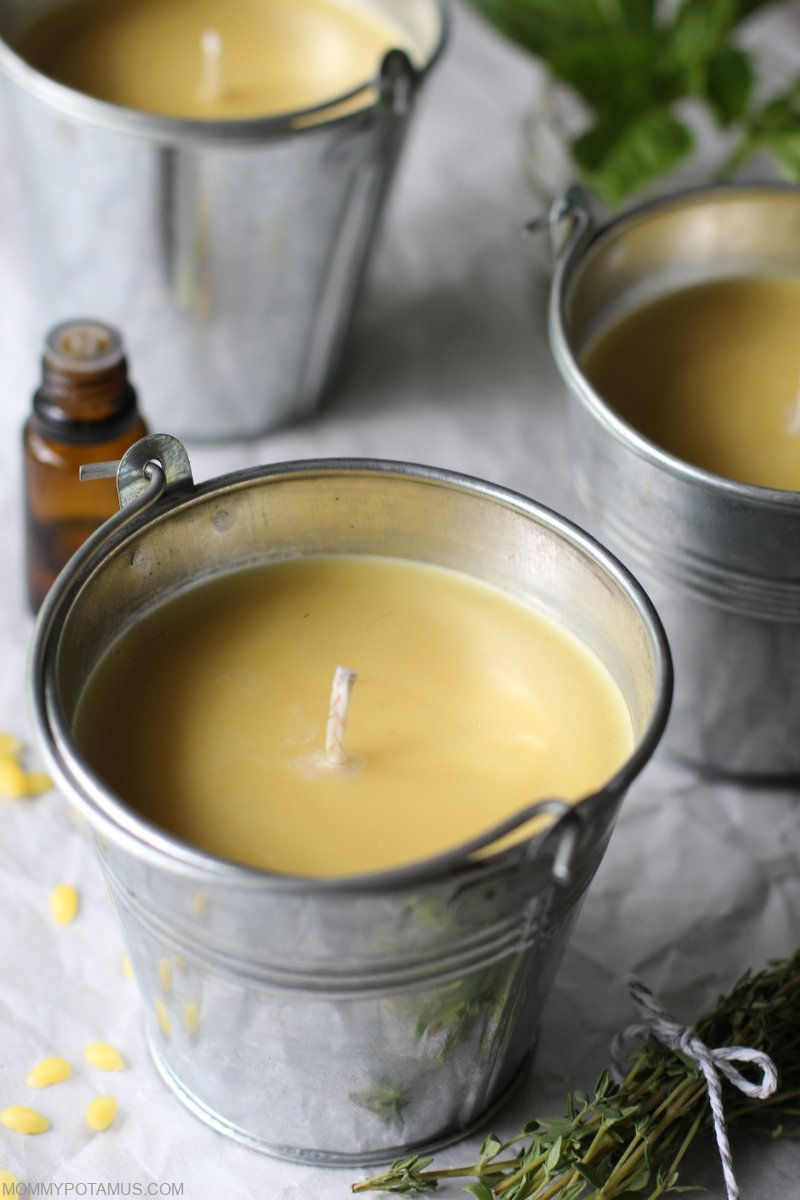
How To Make Citronella Candles
This recipe will make two 12 ounce candles (the size of the buckets I used in the above photos) or three 8 ounce candles (the size of a half-pint mason jar). You’ll find a printable version of these instructions at the bottom of this article.
Equipment
- 1 pound pure beeswax (If you’re using raw, unfiltered beeswax, here’s how to filter it.)
- 1/2 cup coconut oil, melted
- 1 – 1 1/2 teaspoons (1/4 – 1/2 ounce) citronella essential oil
- 1- 1 1/2 teaspoons to 1 (1/4 – 1/2 ounce)lemon eucalyptus essential oil
- Medium cotton wicks with wick tabs attached, like these*
- Wick stickers
- Two 12 ounce candles (the size of the buckets I used in the above photos) or three 8 ounce candles (the size of a half-pint mason jar)
* Because beeswax candles are slow burning, they require thicker, sturdier wicks than what is used for paraffin candles. Keep in mind that the way a wick burns will vary based on many factors, including the size of the container and how refined the beeswax is.
I’ve shared which wicks have worked for me using refined beeswax and the jars above, but it may take a little experimentation to find the perfect size for your wax/container combo.
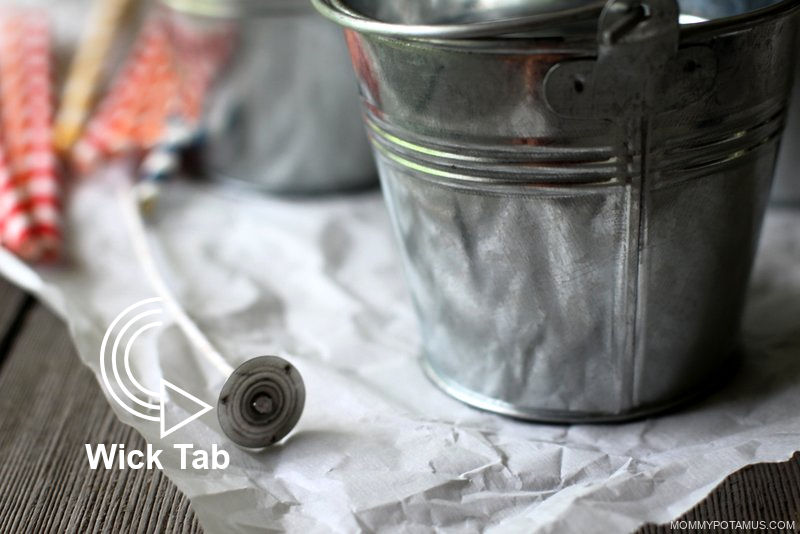
Step 1: Prepare your candle jars
The wicks I recommend come with a metal tab attached to the bottom. The tabs keep the wicks from floating as the candle wax melts. Attach one of the stickers to the bottom of the wick tab and then place the wick in the center of your container.
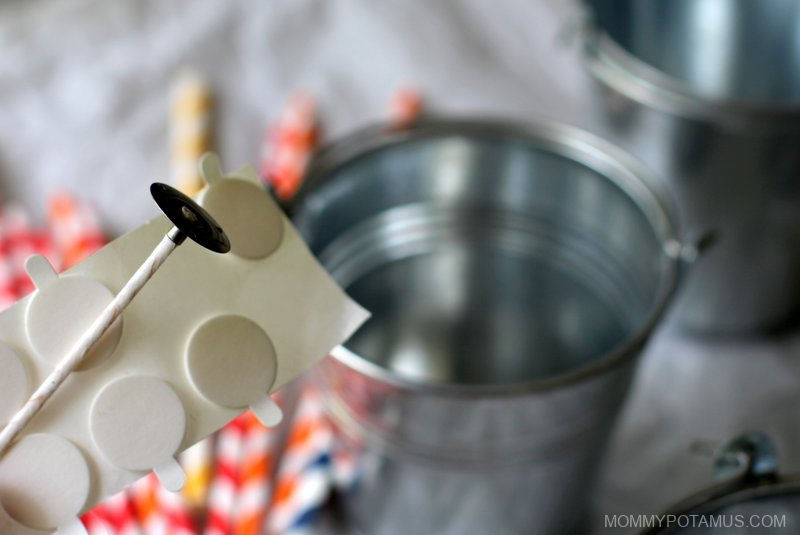
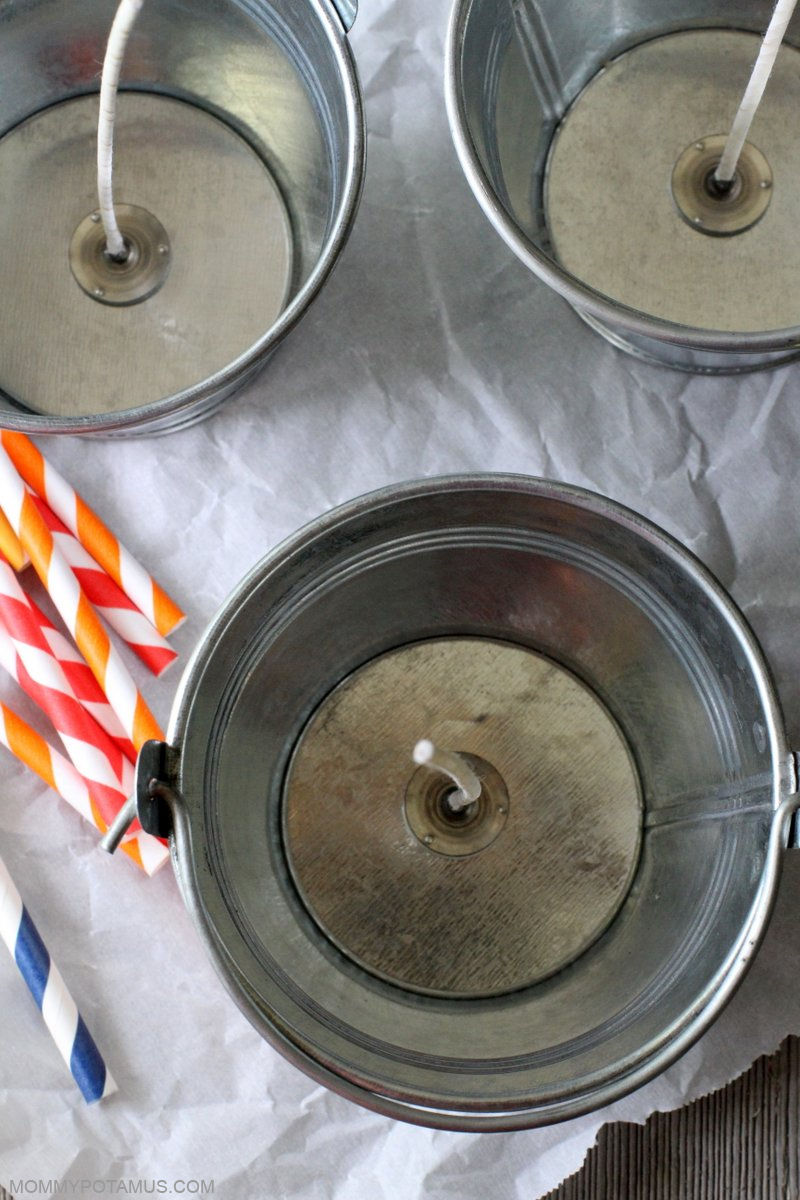
Step 2: Melt beeswax and coconut oil in a double boiler
In a double boiler (or large pot of simmering water with a stainless steel bowl or smaller pot resting inside), gently melt the beeswax and coconut oil over low heat.
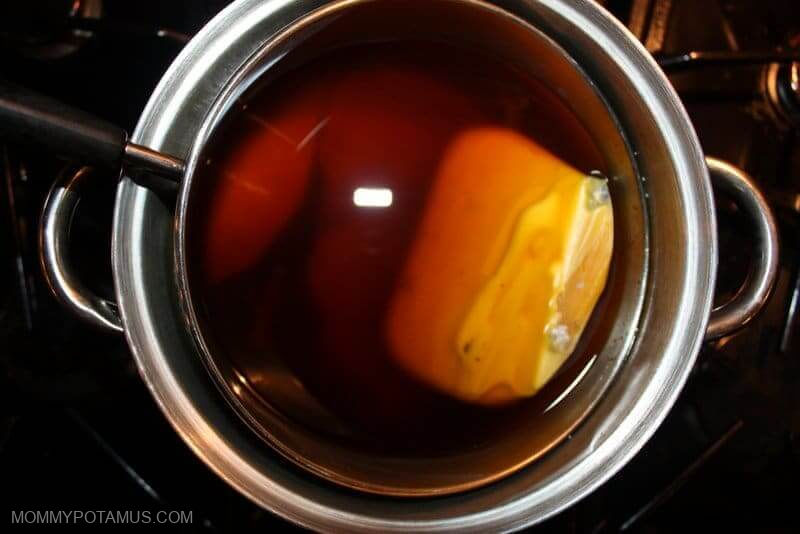
Step 3: Add citronella
Once the wax is fully melted, remove it from heat and stir in the citronella. Move quickly to the next step – the wax begins to harden as soon as it cools.
Step 4: Pour beeswax mixture
Pour the melted wax into your container and check the position of the wick to make sure it is still centered.
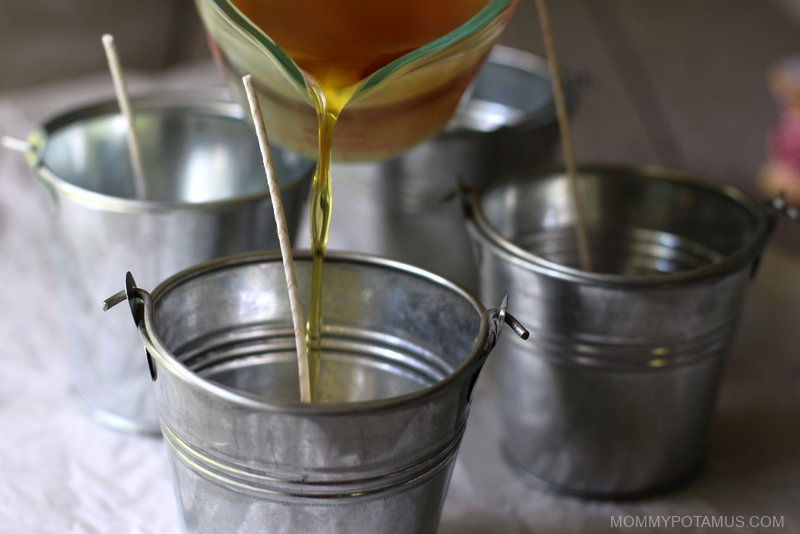
Step 5: Set the wick
Use a pencil or chopstick to prop the wick up in the center. My wicks are dipped in wax so they stand up well with just a little support. If you’re using wicks that are not dipped, you may need to tape them to the pencil/chopstick to keep them in place.
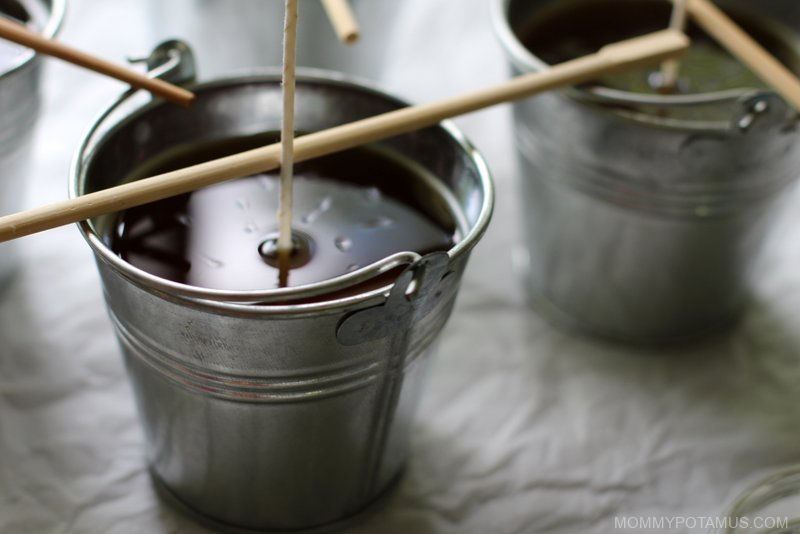
Step 6: Allow candles to set
Sometimes candle wax cools too quickly it tends to crack down the center. With the galvanized buckets I used for this set that wasn’t an issue at all.
However, if you find that your candles do crack while cooling, you can heat your oven to 300F, place them inside and then turn off the oven. The candles will melt just enough to fill in the crack – all you need to do is leave them in there until they’ve completely cooled. Make sure to keep your pencil/chopstick in place to secure your wick.
Step 7: Trim wick
Allow your candles to harden for 24 hours, then trim the wick to about 1/4 inch. Allow to cure for another 24 hours before using.
When lighting your candle, direct the flame at the base of the wick so that some of wax melts and is drawn up into the wick – this helps it burn properly. Allow candle to burn long enough so the wax melts out to the side of the jar. This helps to prevent tunneling (when the middle melts down with lots of wax left over around the edges). Never leave a candle unattended.
Cleaning Tip: Place any oven proof containers in a warm oven to melt wax that has dried on the sides. Once the wax is melted, wipe it out with a paper towel or old newspaper.
What To Buy If You Don’t Want To DIY
Candle making is one of my favorite DIY projects, but when time is short I sometimes opt for safe, pre-made options.
This organic beeswax and citronella candle is my top choice. It’s a beeswax-based candle that also incorporates “gleanings,” which are food-grade organic oils and butters used to make non-toxic skincare products. I love that it helps to reduce waste and it has a long burn time (up to 30 hours).
Frequently Asked Questions
It’s possible if you use a wider container that holds 24 ounces and double the amount of beeswax, coconut oil and citronella oil you use. However, I’d definitely recommend the medium wicks instead of the large ones if you are going to have more than one.
I haven’t tested it but candelilla wax might work. It has a similar melting point to beeswax.
These handmade citronella candles burn for 40 hours.
It depends on a lot of factors. If it’s a windy day you’ll likely need more, and if there aren’t many critters out you’ll likely need less.
To make bug spray!
Unlike true eucalyptus, which contains high amounts of 1.8 cineole that can cause breathing problems in children, both citronella and lemon eucalyptus are considered safe for children.
Homemade Citronella Candles
Ingredients
- 1 lb pure beeswax (If you're using raw, unfiltered beeswax, here's how to filter it.)
- ½ cup coconut oil
- 1-1½ tsp citronella essential oil (1/4 – 1/2 ounce by weight)
- 1-1½ tsp lemon eucalyptus essential oil
- 2-3 medium cotton wicks with wick tabs attached
- wick stickers
- Two 12 ounce candles (the size of the buckets I used in the above photos) or three 8 ounce candles (the size of a half-pint mason jar)
Instructions
Prepare Your Candle Jars
- The wicks I recommend come with a metal tab attached to the bottom. The tabs keep the wicks from floating as the candle wax melts. Attach one of the stickers to the bottom of the wick tab and then place the wick in the center of your container.
Melt & Pour The Wax Mixture
- In a double boiler (or large pot of simmering water with a stainless steel bowl or smaller pot resting inside), gently melt the beeswax and coconut oil over low heat.
- Once the wax is fully melted, remove it from heat and stir in the citronella. Move quickly to the next step – the wax begins to harden as soon as it cools.
- Pour the melted wax into your container and check the position of the wick to make sure it is still centered.
Set The Wick
- Use a pencil or chopstick to prop the wick up in the center. My wicks are dipped in wax so they stand up well with just a little support. If you're using wicks that are not dipped, you may need to tape them to the pencil/chopstick to keep them in place.
- Sometimes candle wax cools too quickly it tends to crack down the center. With the galvanized buckets I used for this set that wasn't an issue at all. However, if you find that your candles do crack while cooling, you can heat your oven to 300F, place them inside and then turn off the oven. The candles will melt just enough to fill in the crack – all you need to do is leave them in there until they've completely cooled. Make sure to keep your pencil/chopstick in place to secure your wick.
Trim The Wick
- Allow your candles to harden for 24 hours, then trim the wick to about 1/4 inch. Allow to cure for another 24 hours before using. When lighting your candle, direct the flame at the base of the wick so that some of wax melts and is drawn up into the wick – this helps it burn properly. Allow candle to burn long enough so the wax melts out to the side of the jar. This helps to prevent tunneling (when the middle melts down with lots of wax left over around the edges). Never leave a candle unattended.
Notes
Want a FREE ebook of non-toxic cleaning recipes that WORK?
I’ve created a free ebook for you as a gift for signing up for my newsletter. 7 Non-Toxic Cleaning Recipes That Really Work covers seven recipes that you can make in just a few minutes each for squeaky clean windows, sparkling dinnerware, lemon-fresh countertops, and more. Subscribe to my newsletter below and you’ll be redirected to a download page for immediate access to this PDF ebook.
Sources:
1. Peters, Paul and Schaefer, Christof (2007) Insect Repellent.
2. Marta, Ferreira Maia and Moore, Sarah J. Plant-based insect repellents: a review of their efficacy, development and testing.

